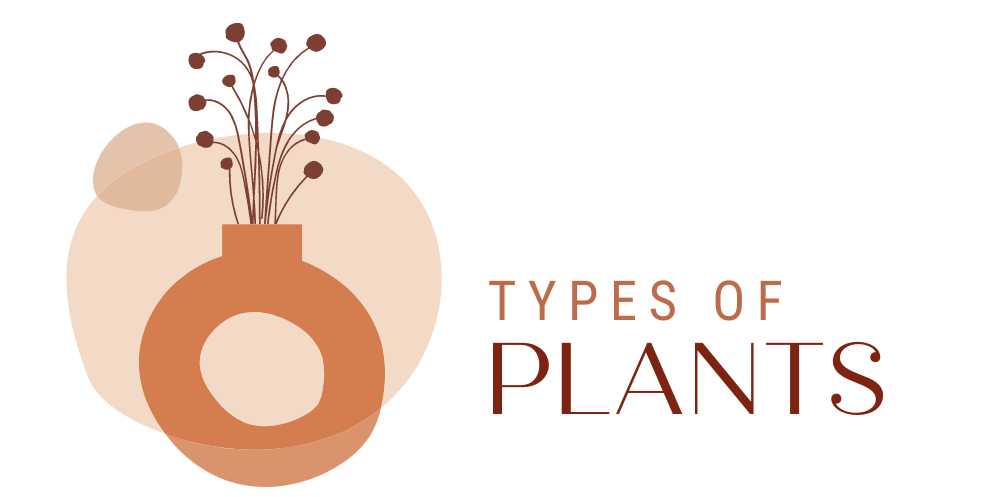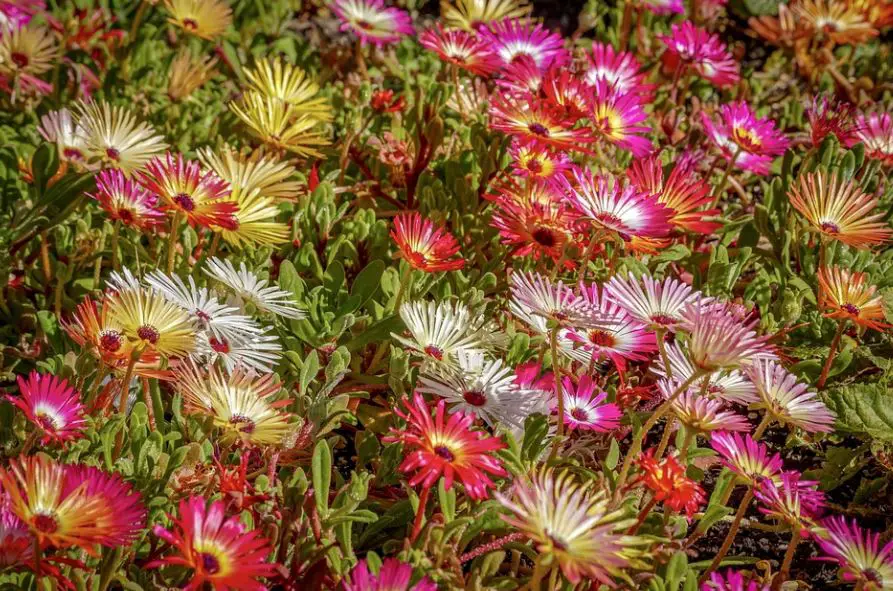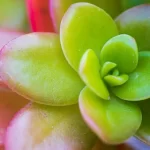Are you looking for a new plant addition for your garden? Look no further and opt for any Type of Ice Plant. These pretty flowers are drought-tolerant and lovely to look at. Interested? Continue reading and learn more about ice plants, how to grow them, and the different types of ice plants.
Suppose you are determined to grow ice plants, good for you. There’s are numerous benefits about these lovely flowers, including adding a bright splash of color to the drier areas of your garden, and did we mention ice plants are pretty low maintenance!
With that said, no matter how easy it is to care for a plant when you’re a first-timer, little research is always a good idea. You certainly do not want to end up with a bunch of dead flowers. And though it may seem to sound a little intimidating at first, especially if you are new to growing your plants, you have nothing to worry about. With this guide, you’ll find out everything you need to know about the type of ice plants.
Types of Ice Plant
Ice Plant Ground Cover Flower
Ice plant seeds mix is a hardy perennial grown in USDA Zones 10 – 11 as a flowering ground cover plant. This mix will grow as an annual in frosty areas.
Dorotheanthus bellidiformis, commonly called Livingstone Daisy or Ice Plants, is free-flowering, and once it is established, it is drought tolerant.
The bright-colored daisies are 1 inch across and have many long petals around a black center eye.
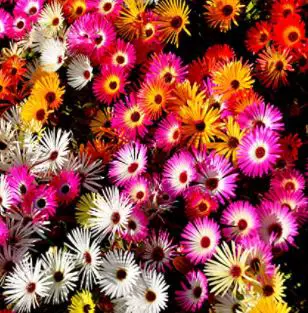
Features:
- Full sun
- Easy to care
- Cover plant
Red Ice Plant Seeds
Ice Plant (Dorotheanthus Bellidiformis Gelato Bright Red); are well known for their low growing habit and drought tolerance.
Ice plant seeds are easy to grow and form succulent plants that require very little water to keep them healthy and green. This type of Ice Plant is grown as an annual ground cover plant in USDA zones that get frost.
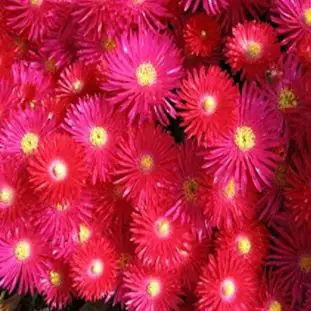
Features:
- 4 inch perennial
- USDA Zones: 10 – 11
- Red bloom color
Ice Plant Congestum Ground Cover Flower Seed
These perennials are best in USDA Zones 5 – 9. The height at maturity is 4 inches. Plant Delosperma seeds indoors 4 – 6 weeks before the last frost is predicted. Use starter trays and sterile potting mix.
Ice Plant has foliage that is apple green and succulent. The brilliant yellow-colored blooms are 1 – 2 inches across and cover the foliage, opening in the morning and closing in the evening.
This hardy, dwarf perennial forms a ground-hugging carpet that faithfully blooms season after season. It’s also great in containers.
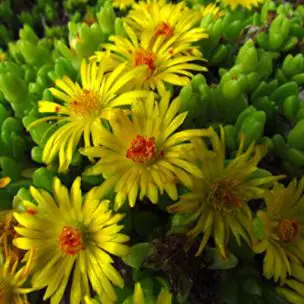
Features:
- Non-GMO seeds
How to Grow Ice Plants?
- Ice plant flowers grow in plant hardiness zones 5-9 and will bloom for most of the summer and fall.
- Their foliage is mostly evergreen and, because of this, they make a great year-round ground cover. While the plant is evergreen, it will often have some dieback of foliage in the winter.
- Ice plants prefer full sun but can tolerate some light shade in the garden.
- Because ice plants are succulents, they do not tolerate wet soil but do well in poor soils. Wet soil, especially in winter, is likely to kill the plants.
- This plant can become invasive in areas where the soil stays consistently dry, so it is best to consider this when planting it.
- When seeds grow, scatter them on the soil’s surface and do not cover them, as they need light to germinate.
How to Care for Ice Plants?
- Once they are established, ice plants require little maintenance. As succulents, they need minimal watering and thrive in drought-like conditions.
In addition, these plants need little to no fertilizing. Plant your ice plant flowers and watch them grow. - Ice plants are used in sunny but sheltered desert gardens, rock gardens, slopes, or ground cover or edging plants.
- Individual plants often spread around 2 feet, though they occasionally can spread even more than that. They also work well as container plants that quickly fill the top and eventually spill over the sides of the container.
- Make sure your planting location has a lot of suns and fast-draining soil. Space plants 15 to 18 inches apart will quickly spread to fill the space. Each spring, prune out any winter-killed stems.
- Ice plants prefer full sun, which allows them to flower profusely.
- Dry soil with excellent drainage is essential for an ice plant. The plant will suffer under constantly moist conditions, and it won’t grow in dense clay soil.
Common Questions About Types of Ice Plant
What is the name of the ice plant?
Highway ice plant (Carpobrotus edulis, formerly Mesembryanthemum edule) is one of the most commonly grown species and is named for the transparent glistening swellings on its edible leaves. It is cultivated in gardens and as an indoor potted plant.
Are ice plants succulents?
The hardy ice plant (Delosperma) is a succulent, perennial ground cover with daisy-like flowers.
Where do ice plants get their name?
The ice plant is not called an ice plant because it is cold hardy, but rather because the flowers and leaves seem to shimmer as though covered in frost or ice crystals.
Do ice plants come back every year?
Ice plants are perennials, coming back each year, though their hardiness zones vary by species. Make sure to select a species that is perennial in your climate.
Are there any different types of ice plants?
Some popular varieties of ice plants include:
- Cooper’s ice plant (Delosperma cooperi). This purple ice plant is the most common variety. This plant features magenta flowers and grows around 3 to 6 inches tall. It’s suitable for zones 6 to 10.
- Hardy yellow (Delosperma brunnthaleri). This species consists of lovely yellow flowers. This hardy ground cover grows around 2 inches tall and 2 feet wide with yellow flowers. It’s suitable for zones 4 to 9.
- Starburst (Delosperma floribundum). An ice plant variety with pink flowers and a white center. This is a mat-forming cultivar that has pink flowers with white centers. It’s suitable for zones 6 to 8.
- Hardy white (Delosperma herbeau). A white-flowered type that offers exceptional beauty.
- Lampranthus aurantiacus. This species has bright orange flowers and an upright growth habit, reaching around 15-18 inches high. It’s suitable for zones 9 to 11.
- Lampranthus haworthii. This plant sports blue-green foliage and pink or purple flowers. It’s suitable for zones 9 to 11.
How can the ice plant be propagated?
- The ice plant can be propagated by division, cuttings, or seeds. If propagating by division, it is best to divide the plants in the spring. Cuttings can be taken anytime in the spring, summer, or fall.
- Dig up the plant, avoiding as much damage to the roots as possible. It helps to moisten the soil beforehand to allow the roots to slide out more quickly.
- Use a sharp spade to divide the plant in half at the roots.
- Replant each half in a suitable growing site at the same depth the original plant was growing. Gently pat down the soil and lightly moisten it.
Big Grip Garden Hand Trowel
The Big Grip Trowel features an extra-large handle with Softgrip to help you get more done in comfort.
An extra-large polished cast-aluminum head moves more dirt faster, resists rust, and won’t snap off.
A sharpened blade edge cuts into the ground with ease, and a handle hang hole simplifies storage.
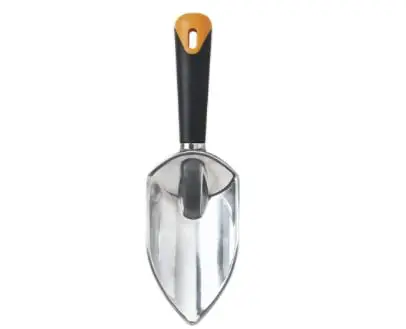
Features:
- Aluminum
- Extra-large handle
- Softgrip
Should you add fertilizer to ice plants?
It can be helpful to add compost or a slow-release fertilizer made for flowers, following label instructions, when planting. Ice plants can also do well with no feeding whatsoever.
However, container-grown ice plants are likely to need feeding, as the soil nutrients in pots become depleted more quickly than garden soil. Weak growth or a lack of blooms can be signs that feeding is necessary.
Worm Castings Organic Fertilizer
Wiggle Worm Soil Builder Pure Earthworm Castings Organic Fertilizer is an all-purpose natural fertilizer that comes to you straight from nature with no alterations whatsoever.
These nightcrawlers are fed a rich organic material containing a wide variety of minerals and trace elements.
The earthworms digest this material, and in its’ passage through the worm, it is beneficially altered both chemically and physically.
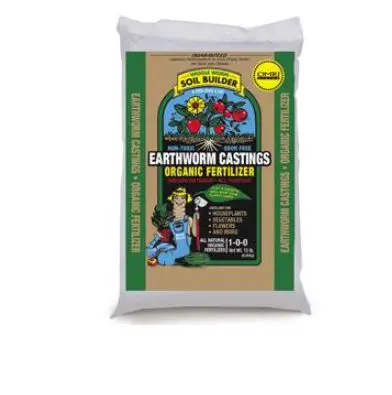
Features:
- All-purpose
- Non-Toxic
- Odor-Free
What are common pests affecting ice plants?
Aphids and mealybugs can be an occasional problem with ice plants. Look for leaf and stem damage and sticky or otherwise abnormal substances that these bugs leave behind on the plants. Treat small infestations by dabbing with cotton swabs dipped in rubbing alcohol.
Read: Calathea Varieties
